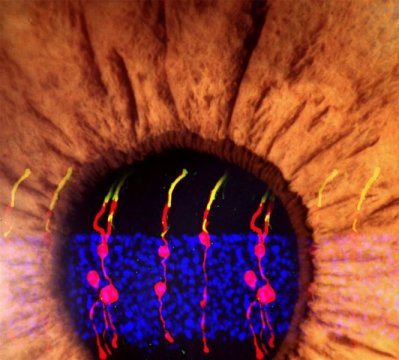New York: Scientists have reversed congenital blindness in mice for the first time using a technique that may lead to new treatments for humans.
The researchers from Icahn School of Medicine at Mount Sinai in the US reversed congenital (present from birth) blindness in mice by changing the supportive cells in the retina called Muller glia into rod photoreceptors.
The findings advance efforts towards regenerative therapies for blinding diseases such as age-related macular degeneration and retinitis pigmentosa, researchers said.
“This is the first report of scientists reprogramming Muller glia to become functional rod
photoreceptors in the mammalian retina,” said Thomas N Greenwell from the US National Eye
Institute (NEI).
“Rods allow us to see in low light, but they may also help
preserve cone photoreceptors, which are important for colour vision and high visual acuity,” Greenwell said. “Cones tend to die in later-stage eye diseases. If rods can be regenerated from inside the eye, this might be a strategy for treating diseases of the eye that affect photoreceptors,” he said.
Photoreceptors are light-sensitive cells in the retina in the back of the eye that signal the brain when activated.
In mammals, including mice and humans, photoreceptors fail to regenerate on their own. Like most neurons, once mature they don’t divide.
In the first phase of a two-stage reprogramming process the team spurred Muller glia in normal mice to divide by injecting their eyes with a gene to turn on a protein called beta-catenin. Weeks later, they injected the mice’s eyes with factors that encouraged the newly divided cells to develop into rod photoreceptors.
The researchers used microscopy to visually track the newly formed cells. They found that the newly formed rod photoreceptors looked structurally no different from real photoreceptors.
Unforgiving Skies
By Dilip Cherian The IndiGo incident has once again reminded us of something we often overlook: India operates one...
Read moreDetails






































